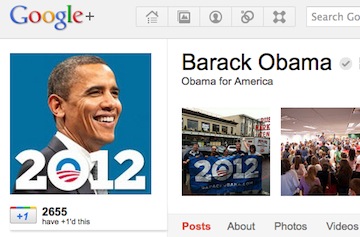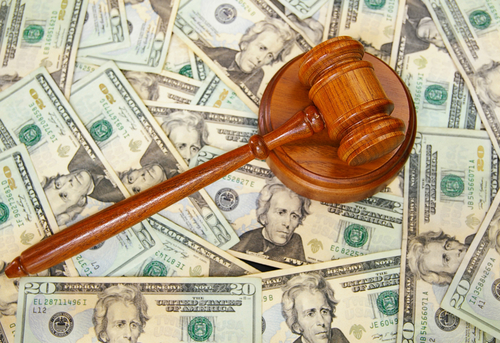Looking Ahead to Obama’s 2012 Social Media Campaign

–Guest post by American University graduate student Laila Yette.
Through the use of sites like Facebook and Twitter, President Obama’s 2008 campaign changed the way that we view social media and its relation to elections. Because of the awareness that was brought to social media and the impact that it can have on the way the public views a candidate, as the 2012 election is quickly approaching, candidates are taking to social networking sites to reach a broader audience.
To help monitor the candidate’s campaigns, The Meltwater Group launched the Meltwater Election Buzz. This site serves as “a one-stop online resource for tracking and analyzing the social conversation around the issues and candidates in the 2012 presidential election.” Posts from Twitter, Facebook, blogs, message boards, and other online sites are monitored daily and gathered to create a word cloud with the most prominent issues. In addition to the word cloud that focuses on the election as a whole, word clouds will be generated for each candidate to show what their main focus is. Weekly blog posts discussing top news are another facet that The Meltwater Group has made available to the public.
Internet and social media strategy complemented the traditional campaign activities of the Obama campaign. The Pew Internet & American Life Project has reported the 2008 election as the first time that “more than half the voting-age population used the internet to connect to the political process during an election cycle.”
During the campaign, the three major social networking sites, MySpace, Facebook and YouTube ranked among the top ten sites visited online. In addition to those sites, Twitter also influenced the campaign. The use of these sites altered the way in which candidates ran their campaigns and helped President Obama garner the youth vote.
With 5 million friends on 15 social networking sites, and 3 million of those friends on Facebook alone, President Obama’s campaign team knew which sites to join and joined sites that most people would not even think of. According to The Social Pulpit: Barack Obama’s Social Media Toolkit, by Edelman, President Obama started a profile on AsianAve.com, MiGente.com and BlackPlanet.com. He did not leave a stone unturned in using social media to reach across voter segments. Wanting to connect with people regardless of their demographic, President Obama reached out to the public however he could.
The Edelman toolkit also discusses the demonstrated support on Facebook. More than 900,000 people joined the ‘One Million Strong for Obama’ group and a number of colleges and universities had Facebook groups showing their support. People were able to discuss the latest issues that President Obama brought up in a debate, speech or appearance. Having the instant connection and ability to voice their opinion was important for the youth.
President Obama’s campaign also started a page on MySpace. With over 110 million members near the time of the election, MySpace was an essential medium in getting the message out. Like Facebook, MySpace allowed people to discuss their thoughts on the campaign freely.
The role that YouTube played in the election is also important to consider. The Edelman toolkit explains that during Obama’s campaign to the White House, almost 2,000 official YouTube videos were watched more than 80 million times. Allowing people to watch content created by the Obama campaign, as well as user generated content, gave people the feeling that they were being heard. Posting a video that you made for people around the corner to people an ocean away to be able to watch is powerful. Posts on YouTube also open the door for discussion. In addition, YouTube allows for potential news to constantly be produced. President Obama’s campaign team could upload a video to the site at any time of day, anywhere in the world.
The convenience that he afforded the public, especially the youth, helped win him the election. President Obama’s campaign team discovered how to best connect with people and get them involved. Always being connected and able to access the Internet from anywhere at anytime is important for youth. Through the use of social media, President Obama not only strengthened his traditional campaign activities by engaging with the vote, but he also shaped the future of elections. As more people become more involved with social media, future candidates will have to incorporate the sites into their campaigns.
–Guest post by Laila Yette, an MA student in Public Communication at American University in Washington, D.C.
Read other posts from Yette’s project team examining strategies from the 2008 election campaigns as well posts from other project teams in her course on Public Communication Theory
References
Figallo, Cliff (2011). ‘Election Buzz’ Site to Track Online Conversation About 2012 Campaigns. [HTML]
Lutz, Monte (2009). The Social Pulpit: Barack Obama’s Social Media Toolkit. [PDF]





